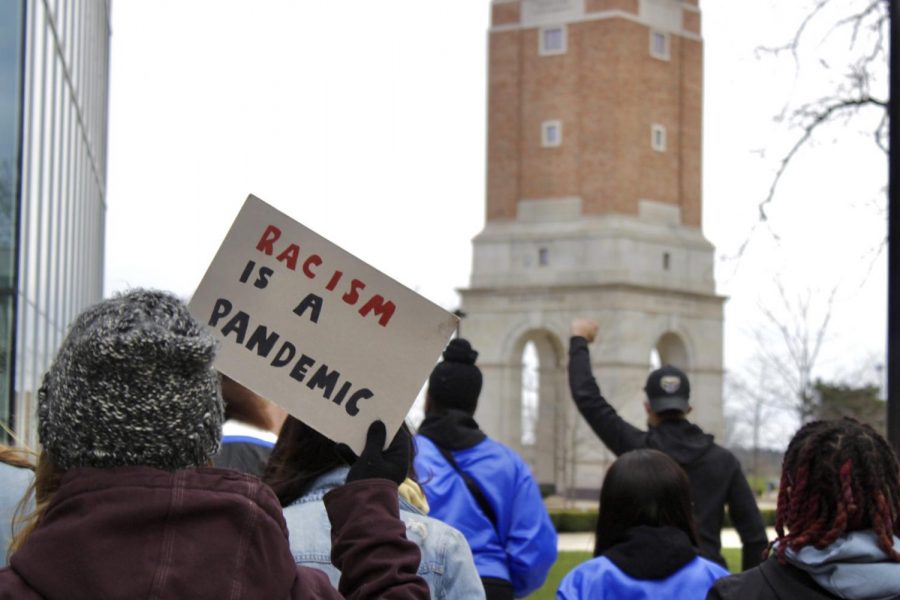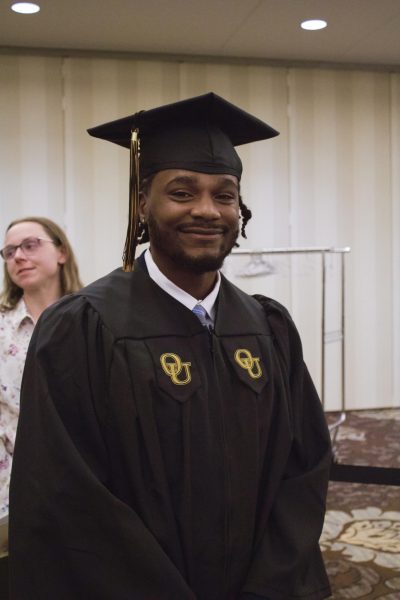Golden Grizzlies Lead: Black Lives Matter Workshop
OU students gathered near Elliott Tower for a BLM demonstration last April. On Monday, Oct. 4, the Recreation Center held a workshop to educate students on the history of the BLM movement.
On Monday, Oct. 4, the Oakland University Recreation Center held a workshop in the Oakland Center to educate students on the history of the Black Lives Matter (BLM) movement to connect and recover with students on campus.
During the hour-long workshop, students gathered together to view a slideshow and discuss their thoughts on the history of BLM. The presentation consisted of a brief history, demands and principles of the movement, communication and a conclusion.
The presentation opened with a discussion about ROPES, which can apply to all social topics and discussions, not only discussions of the BLM movement. ROPES is an acronym for Respect/Risk, Openness/Ouch, Participation/Permission, Education and Sensitivity/Safety. It’s important to remember these principles to make conversations a safe space for all parties involved.
While 2020 was a monumental year for the BLM movement globally, it was not the start of the movement. The movement began in 2013 by Alicia Garza, Patrisse Cullors and Opal Tometi. Over the next seven years, protests ignited after the murders of several Black people throughout the U.S. These deaths include Eric Garner, Michael Brown and so many more.
More protests sparked in June of 2017 after Philando Castile’s murderer was found not guilty. In 2020, protests sprouted around the world following the deaths of Breonna Taylor, Ahmaud Arbery and George Floyd.
Because of the pandemic, people were particularly tuned into the media and the movement garnered even more attention. Currently, the movement may be the largest in U.S. history — since May 2020, 15 to 26 million people have participated in demonstrations.
The demand of BLM is to stop the war on Black people — which isn’t just physically, but mentally as well. The principles are to divest/invest, economic justice, reparations, political power and community control.
What do all these mean? According to the presentation, it boils down to seeing where money is being spent, investing in Black and brown communities and economics. Since 2020, the U.S. has seen a spike in members of Black and brown communities, as well as Asian Americans and Pacific Islanders (AAPI) running for political office. The BLM movement holds that in order to make any real change, money needs to be invested in communities of color.
Communication is also an important piece. According to the presentation, someone’s impact is more important than their intentions — there are ways to recover when a person offends someone, but that person does not get to dictate how to keep moving forward. Offering an apology, promising to do better, reaching out to the person/community directly and showing that one has learned are steps that need to be taken. It’s vital to stand up for communities even when someone from that community is not present.
The presentation concluded with talking about how exposure impacts people’s perception of BLM, as well as a discussion among students about how they felt and their personal experiences.
The impact of racism has negative effects on mental and physical health. The presentation concluded, as for allies, they must remember that such adverse effects exist and need to be respected, and that it is their role to listen.








